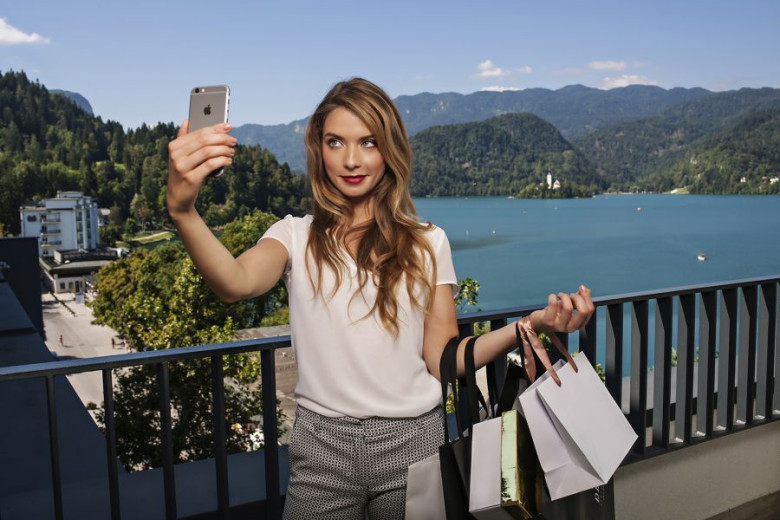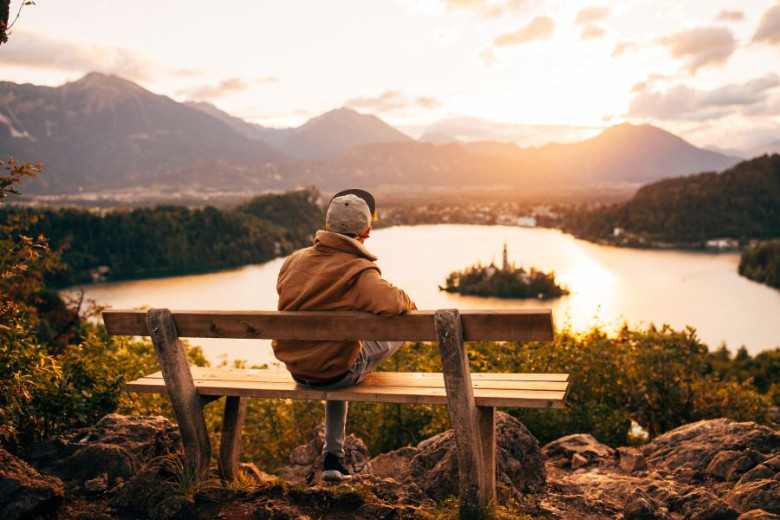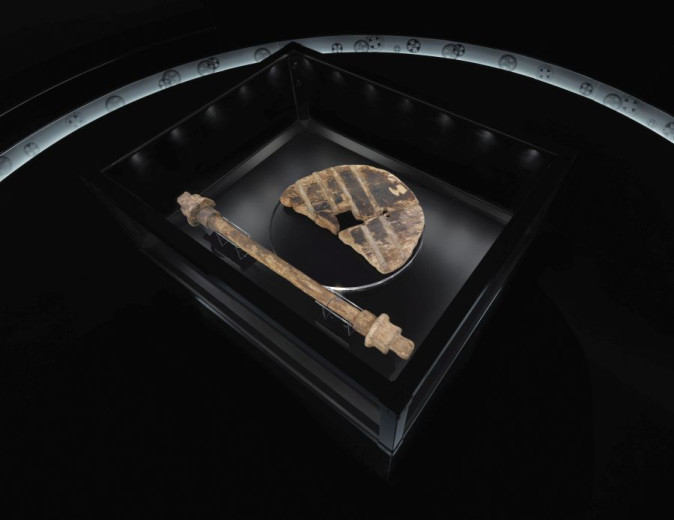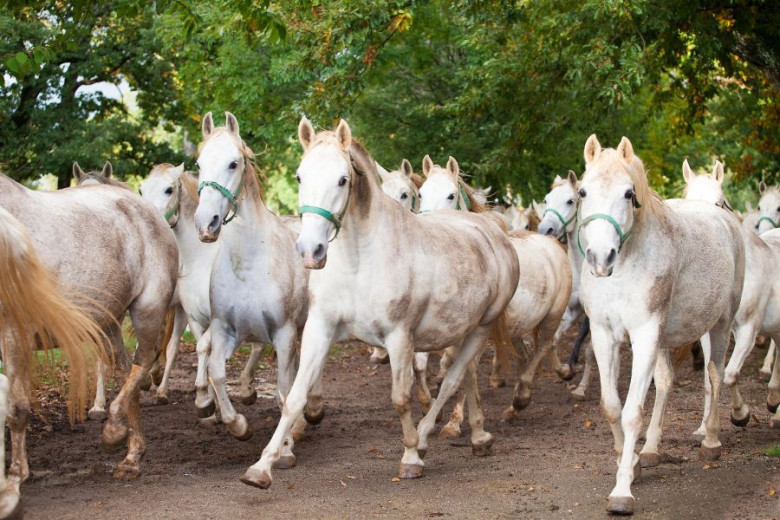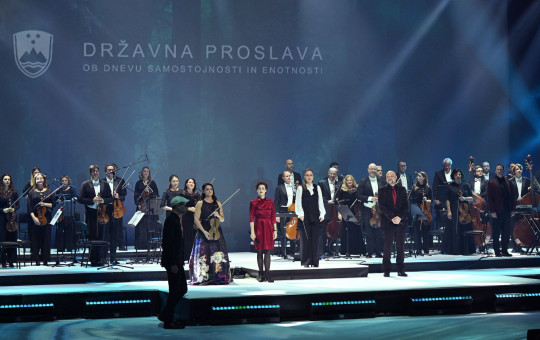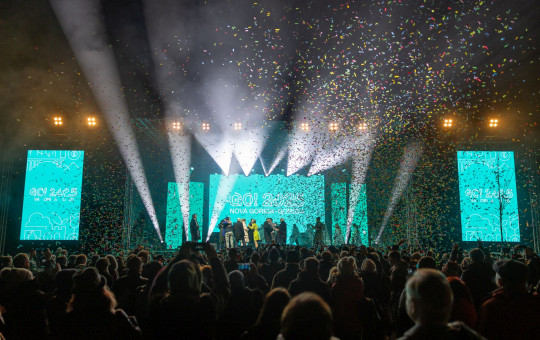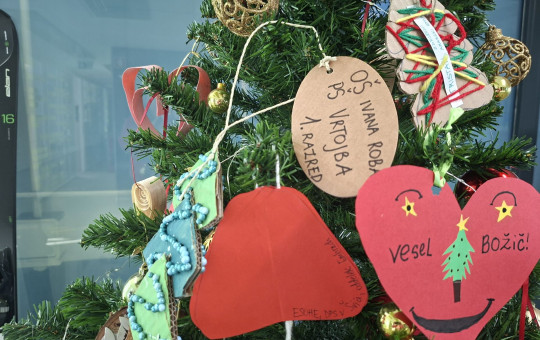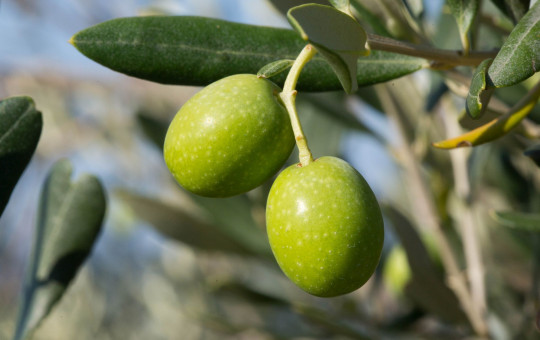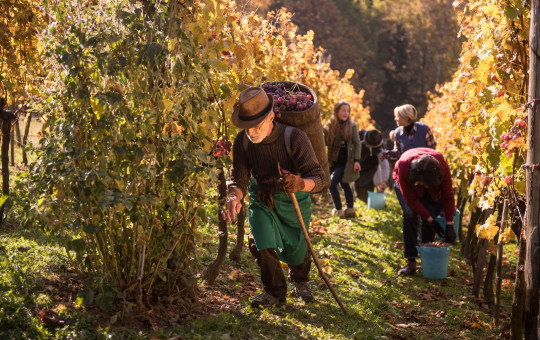Date: 2. August 2024
Time to read: 3 min
In the age of Instagram and the quest for photogenic scenes and attractive content, anyone travelling through Slovenia will surely find plenty of material for clicks and likes. What makes it into the special album of a tourist visiting Slovenia the most?
It’s hard to choose because Slovenia has it all. From the Alps to the Adriatic Sea, rivers, streams, and waterfalls, to hills, plains, and underground wonders, from ancient towns to pristine forests. Here, natural beauty intertwines with rich history and cultural diversity. This diversity is also a hallmark of its cuisine. Indeed, you have found yourself in a land of wonders.
Beautiful Nature and a Rich Cultural Heritage
Those arriving by plane will see vast forests from a bird’s-eye view. Slovenia is green, with almost 60% of the country covered by forests. The primeval forest reserves of Krokar and Snežnik Ždrocle are beautiful pieces of untouched nature and home to native species of predators and birds. There is also the story of the ancient fir tree from Čadrg, which is 6,560 years old. Will it become a musical instrument, a piece of furniture, or simply an exhibit in a museum? You will surely be impressed by the world’s oldest musical instrument – a 60,000-year-old Neanderthal flute.
Among the most beautiful places are Ljubljana, Bled, Postojna Cave with Predjama Castle, Triglav National Park with the Trenta Valley, Lake Bohinj, Savica Waterfall, and Zelenci Lake.
Piran is a charming seaside town, and you will also be enchanted by other coastal towns and salt pans. In addition to Postojna Cave, the Škocjan Caves should not be missed, with both known for their magnificent subterran ean halls. In Slovenia’s second-largest city, Maribor, you can see the world’s oldest vine that still bears grapes. Pohorje, located nearby, is excellent for year-round recreation. You will also enjoy wine cellars throughout Slovenia. Ptuj is the oldest Slovenian town, also known for its traditional carnival mask – the Kurent. Kurent parades are listed on the Representative List of the Intangible Cultural Heritage of Humanity.
-
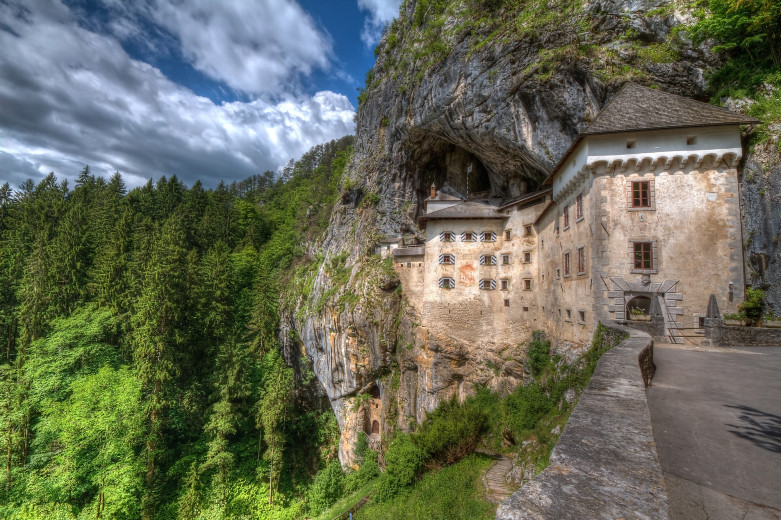 A fairytale Predjama castle embraced by rock. Photo: Alan Kosmač/www.slovenia.info
A fairytale Predjama castle embraced by rock. Photo: Alan Kosmač/www.slovenia.info
-
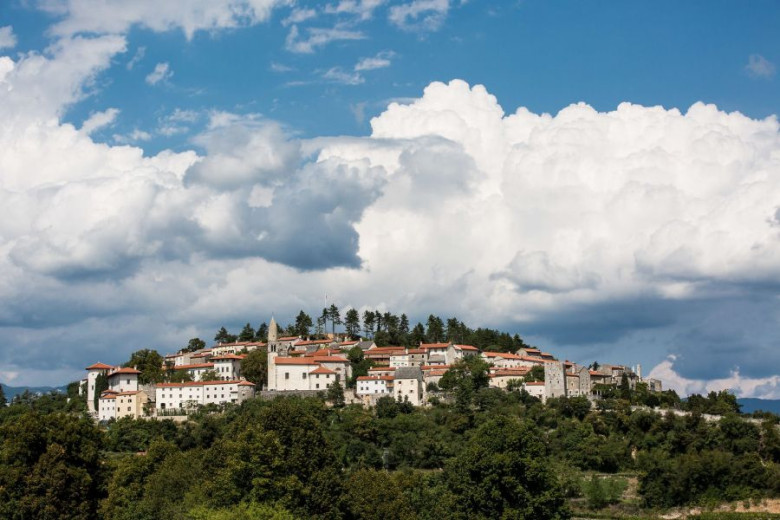 Štanjel, a medieval village, is a gem of Karst architecture. In the terraced village, you can admire tightly clustered residential houses, the paradise complex, defensive towers, churches, and gardens. Photo: Vid Ponikvar/www.slovenia.info
Štanjel, a medieval village, is a gem of Karst architecture. In the terraced village, you can admire tightly clustered residential houses, the paradise complex, defensive towers, churches, and gardens. Photo: Vid Ponikvar/www.slovenia.info
Slovenia is also one of the countries where the protected world heritage of prehistoric pile dwellings around the Alps is preserved. Around 40 locations with remains of pile dwellings have been discovered in the Ljubljana Marshes.
The most significant find is a 5,200-year-old wheel, considered the world’s oldest wooden wheel with an axle.
Ljubljana has always been a special place, and architect Jože Plečnik’s vision transformed the post-earthquake Ljubljana into a city with a Mediterranean temperament and Venetian refinement. Plečnik’s works include architectural objects on both water and land axes, and his contributions to humanity include the archaeological park of the Roman wall, the Ljubljana cemetery of Žale, and the churches of St. Michael and St. Francis of Assisi.
Be amazed by the complexity of the interweaving threads of handmade Idrija lace. The thread also leads to underground shafts where miners once extracted mercury. Today, you can walk through the Idrija mine yourself.
Don’t be surprised if you see wooden little wooden houses in the meadows. These are beehives. Slovenians are a nation of beekeepers, and painted beehive panels are practically an indigenous cultural element. This folk art flourished between 1820 and 1880. Beekeeping is not only present in the countryside but is also well established in urban areas. It’s no wonder that Slovenians proposed World Bee Day which is now recognised worldwide and by the UN.
The Lipica Stud Farm is considered the oldest stud farm in Europe, after having operated continuously for over 444 years. The breeding of elegant white Lipizzaner horses represents an important heritage of Slovenia and seven other countries that participated in the nomination to include this activity on the UNESCO Intangible Cultural Heritage list. Lipizzaner horses have held symbolic roles for centuries in all eight countries and still represent numerous communities today.
Lipica, as the "home" of Lipizzaner horses, is one of Slovenia’s greatest landmarks due to its tradition of horse breeding and its architectural heritage and cultural landscape.
You can even take a photo with a prehistoric monster in Slovenia. It haunts Kamnik. The mammoth, an ice age giant, roamed Slovenia 20,000 years ago. If the Karst shepherd dog, or “kraševec”, Slovenia’s only indigenous dog breed, had heard it, it certainly wouldn’t have fled. A unique feature of Slovenia’s underground world is the olm. (“baby dragons” or Proteus).
Athletes Since Forever
Slovenians have always been skiers, as evidenced by the Bloke skis. The people of Bloke were the only ones in Central Europe to use wooden skis for purely practical reasons. They invented them to run errands, visit, transport goods, take children to baptism, go to church, and even accompany the deceased on their final journey.
The fact that sports are a special passion for Slovenians is also proven by the fact that we are one of the few nations with a Sports Day, celebrated on September 23.
Simply Enjoy!
You too – walk, cycle, climb, taste – experience Slovenia personally. Enjoy not only its visual images but also its content. Slovenia will inspire you.
No traveller has ever been able to resist visiting Slovenia more than once.
In Slovenia, you cannot experience everything in one day, although you can travel across the country in a day. It is a land to which you return. It is a place that inspires.
-
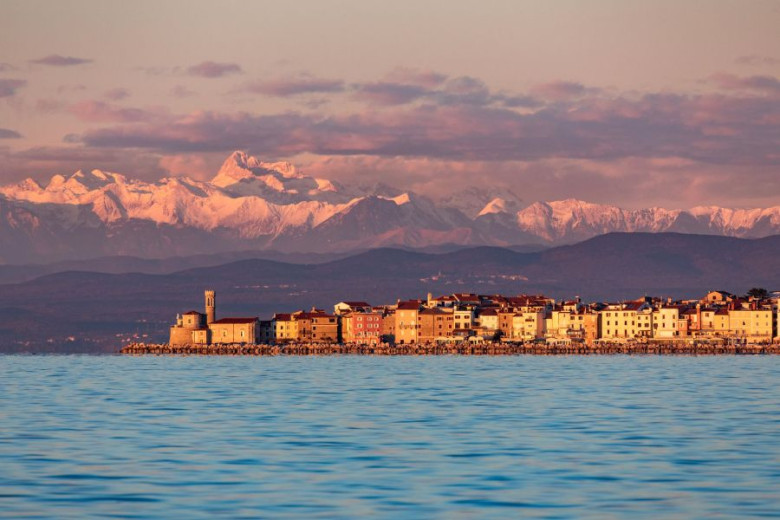 Due to its exceptional photogenic qualities, Slovenia is increasingly becoming a film destination. Most of the foreign films shot here have been filmed in Piran and Ljubljana. Photo: Jošt Gantar/www.slovenia.info
Due to its exceptional photogenic qualities, Slovenia is increasingly becoming a film destination. Most of the foreign films shot here have been filmed in Piran and Ljubljana. Photo: Jošt Gantar/www.slovenia.info
-
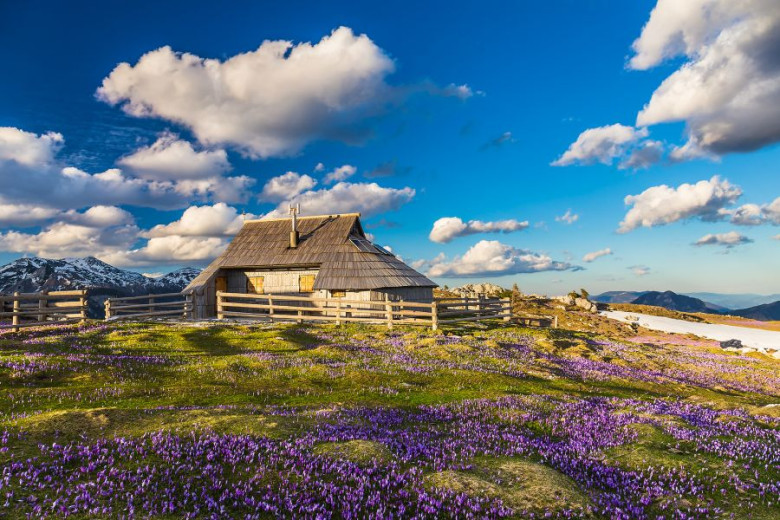 The shepherd settlement on Velika Planina is one of the few preserved settlements of this size in Europe. It is recognizable by its herdsmen’s huts and Trnič cheese. Treat yourself to a shepherd’s snack – sour milk and žganci (made from buckwheat flour and served with milk or cracklings). Photo: Ana Pogačar/www.slovenia.info
The shepherd settlement on Velika Planina is one of the few preserved settlements of this size in Europe. It is recognizable by its herdsmen’s huts and Trnič cheese. Treat yourself to a shepherd’s snack – sour milk and žganci (made from buckwheat flour and served with milk or cracklings). Photo: Ana Pogačar/www.slovenia.info
-
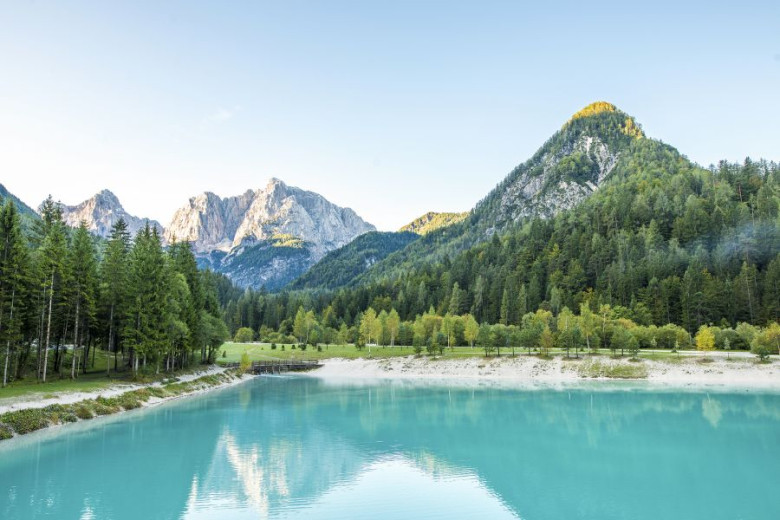 Lake Jasna is a stunning alpine lake near Kranjska Gora. Photo:Jaka Arbutina/www.slovenia.info
Lake Jasna is a stunning alpine lake near Kranjska Gora. Photo:Jaka Arbutina/www.slovenia.info

